If you are interested in World War II, a visit to Bastogne — in particular the Bastogne War Museum and Mardasson Memorial — is a must! Nearby Orval Abbey is also stunning and makes a great stop on a day trip to the Bastogne area. This was our favorite day of our Belgium trip!
As I mentioned in this post, for our quick trip to Belgium we opted to base ourselves in one apartment and spent our time taking day trips from Brussels. We loved this approach because it gave us a “home” of sorts while we were away (albeit one with insane stairs) and because Belgium is small enough and Brussels is central enough that almost everywhere can be a day trip from Brussels. For day three of our trip, Chris took the wheel and planned probably our best day trip of all: a visit to Bastogne and Orval Abbey. So, three cheers to Chris!
Stop one: the Bastogne War Museum and Mardasson Memorial
If you haven’t watched Band of Brothers lately, here’s a quick refresher on the significance of Bastogne. December 1944: a flailing German army is launching its last major offensive of the war on the Western front. The German army — intent on seizing Antwerp and cutting the Allied supply lines — advances through the Ardennes region in eastern Belgium, a heavily forested area. The Allied line is thin and supplies are hard to come by, and the weather is brutally cold. Still, even badly outnumbered the American troops in the region put up fierce resistance that slows the German advance. This allows the 101st Airborne Division to reach the town of Bastogne by December 19. Still, within the two days the city of Bastogne is completely surrounded, and poor weather conditions prevent air drops to resupply the city with ammunition, food and medical supplies. The Allies, however, hold the perimeter … and get a little cheeky in the bargain.
Presented with a Nazi demand for surrender, Brig. Gen. Anthony McAuliffe, acting commander of the 101st Airborne — gives his one-word response: “NUTS.”

For real. This is what they sent.
The tide starts to turn for Germany on Dec. 23 as the weather clears, allowing for resupply. On Dec. 26, Patton’s Third Army arrives in Bastogne to break the siege. By Jan. 7, Hilter orders the withdrawal of his forces from Ardennes, but the bitter fighting continues for three more weeks until the last German units withdraw on Jan. 25.
The offensive, known to history as the Battle of the Bulge, is described by Winston Churchill as “undoubtedly the greatest American battle of the war.” Victory comes at a high price, however. In the wake of the battle an estimated 76,890 Allies soldiers are dead, wounded or missing. On the German side, there are an estimated 80,000 to 100,000 casualties.
I’ll get to the Bastogne War Museum in a moment, as it was one of the absolute best museums Chris and I have ever been to. But first I wanted to mention that in Bastogne you will also find a monument honoring the American soldiers who helped liberate Belgium.
We found the Mardasson Memorial deeply moving. 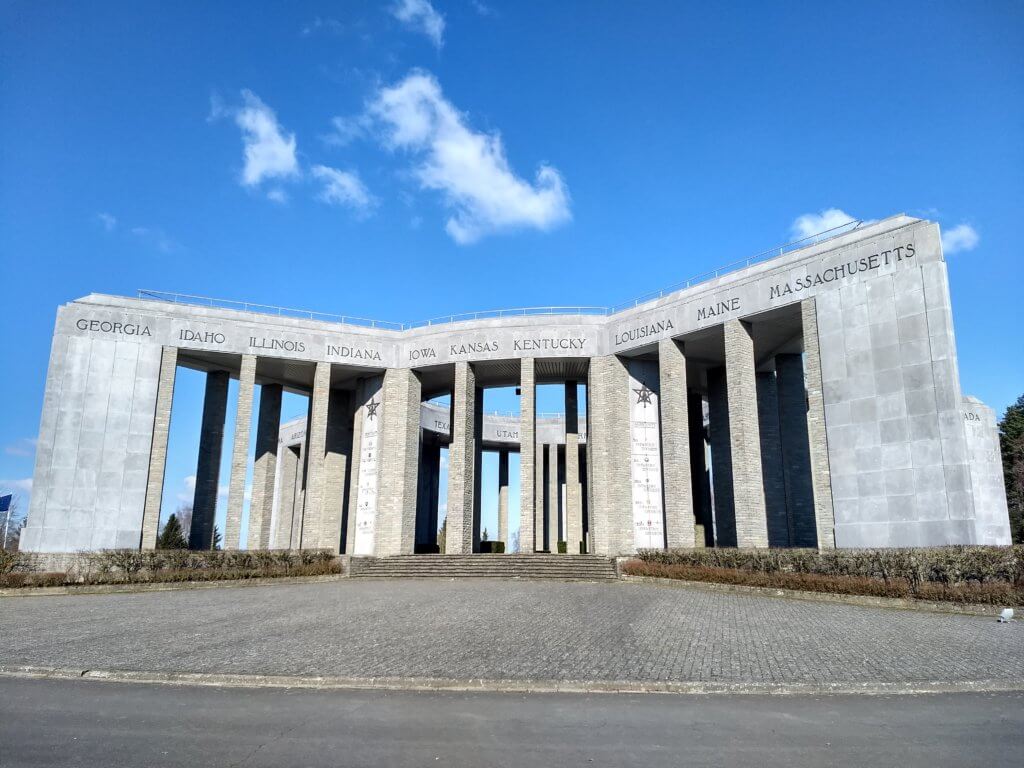
Construction began on the Mardasson Memorial on July 4, 1946.
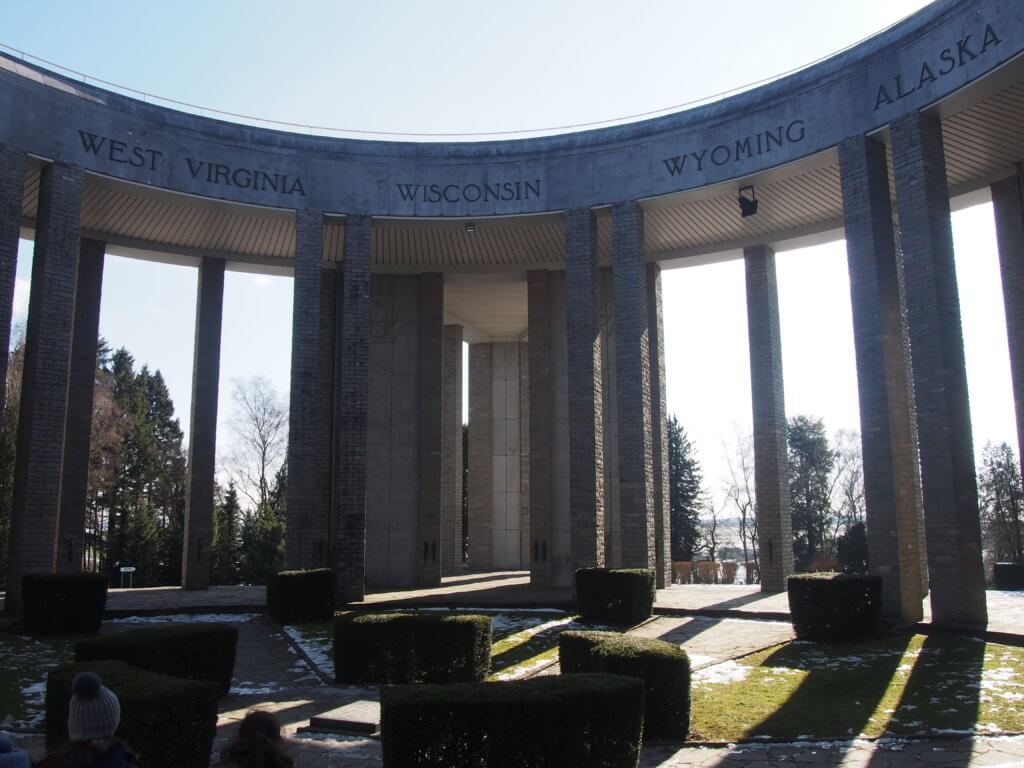
The Mardasson Memorial tells the story of the Battle of the Bulge in 10 panels, entirely in English. It lists the names of each U.S. state as well.
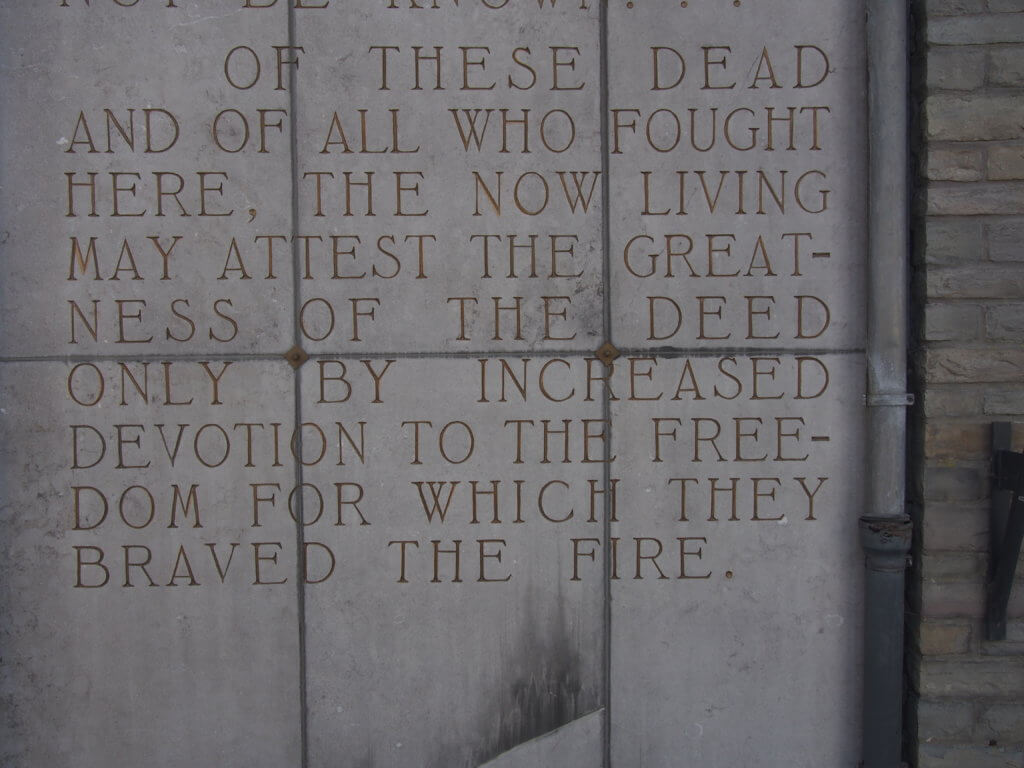
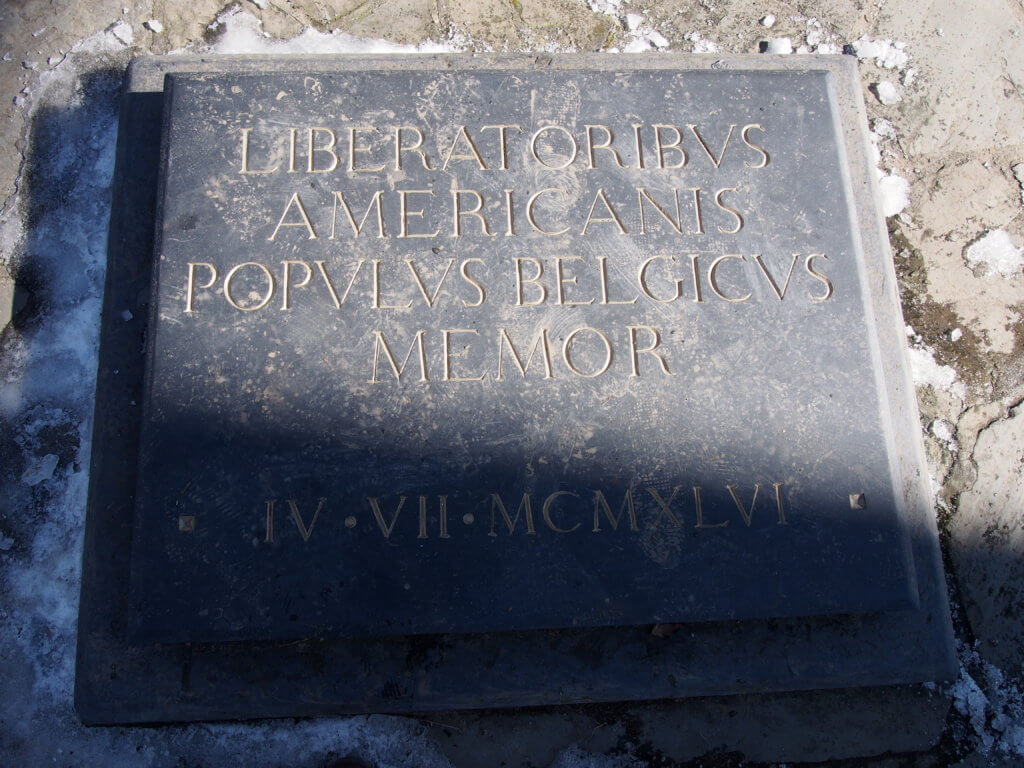
The Latin inscription translates to “The Belgian people remember their American liberators.”
The Mardasson Memorial is right next to the Bastogne War Museum, which as I mentioned above, was one of the best museums we’ve been to. Like a lot of museums, it offers audio guides. The difference, however, is that this audio guide is automatically triggered by your approach to various parts of the museum. Even more interesting is that the story of the war is told to you in a more narrative style through the voices of four people: an American soldier from Georgia, a young German soldier, a school teacher/member of the Belgian resistance, and a 13-year-old boy living in Bastogne.
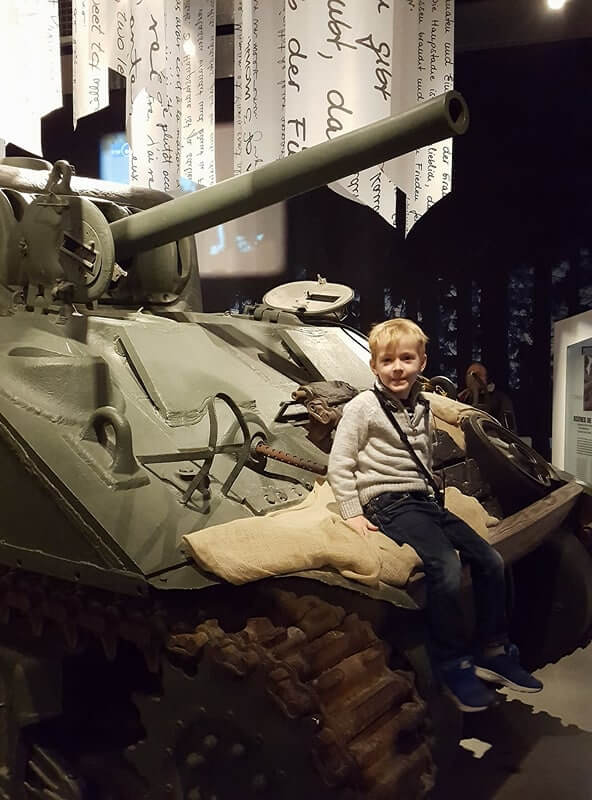
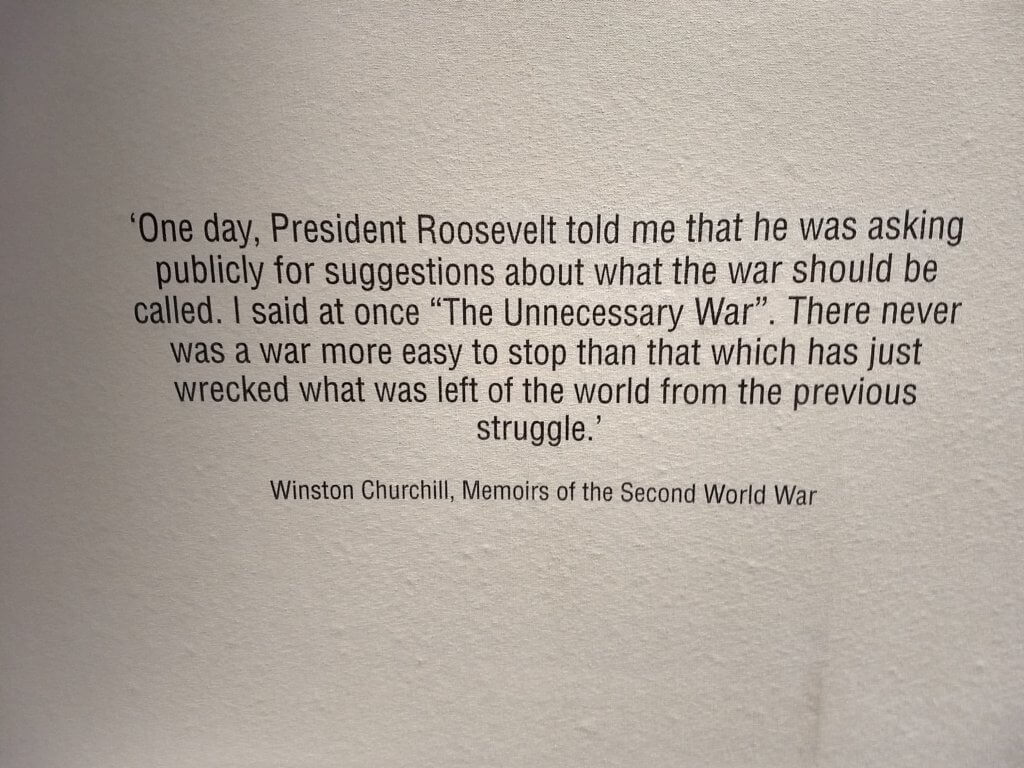
The museum has the usual exhibits of soldiers’ uniforms, photos, weapons and step-by-step descriptions of the lead up to World War II. As you’d guess, it focuses heavily on the Battle of the Bulge and siege of Bastogne. But punctuating these exhibits are video-type shows that further the story of the battle and of our four characters. I don’t know how to explain it quite right — it was mostly video, but included moving sets and some other visual effects at various points. It was an incredible way of telling the story.
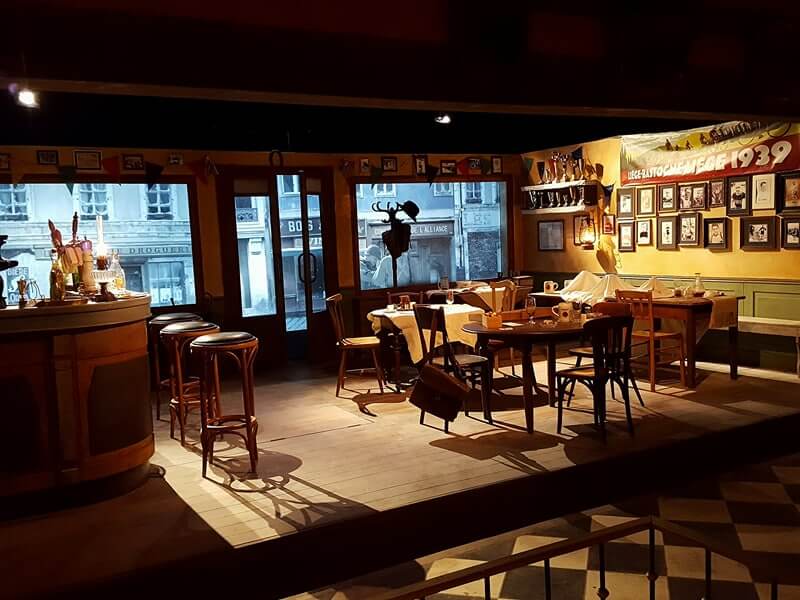
This set up is the from the final video. This floor raised to reveal an entirely different level, the cellar.
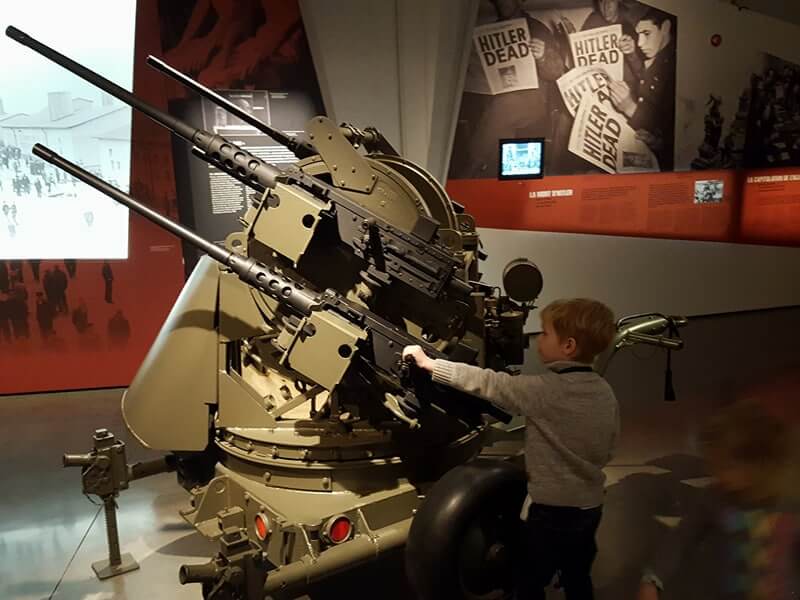
Note the newspaper headlines in the back.
I can’t stress enough that if you have the chance, the Bastogne War Museum is absolutely worth the trip from Brussels, which took about an hour and 45 minutes. I’ve never been to a museum that told a story in quite this way, and it was extremely effective in keeping us and even the kids very engaged in the story.
Stop two: Orval Abbey
We had a quick lunch in the cute town of Bastogne (though regrettably we didn’t have time to go the restaurant called ‘Le Nuts!’), then drove about 45 minutes to Orval Abbey.
Orval Abbey is a Cistercian monastery founded in 1132, which we visited in no small part because of its reputation for the production of Trappist beer and cheese. Also, it is absolutely gorgeous. The original abbey was pillaged and burned in 1637, rebuilt, and then destroyed 1793 during the French Revolution. It was reconstructed about 200 years later, and today remains an active abbey.
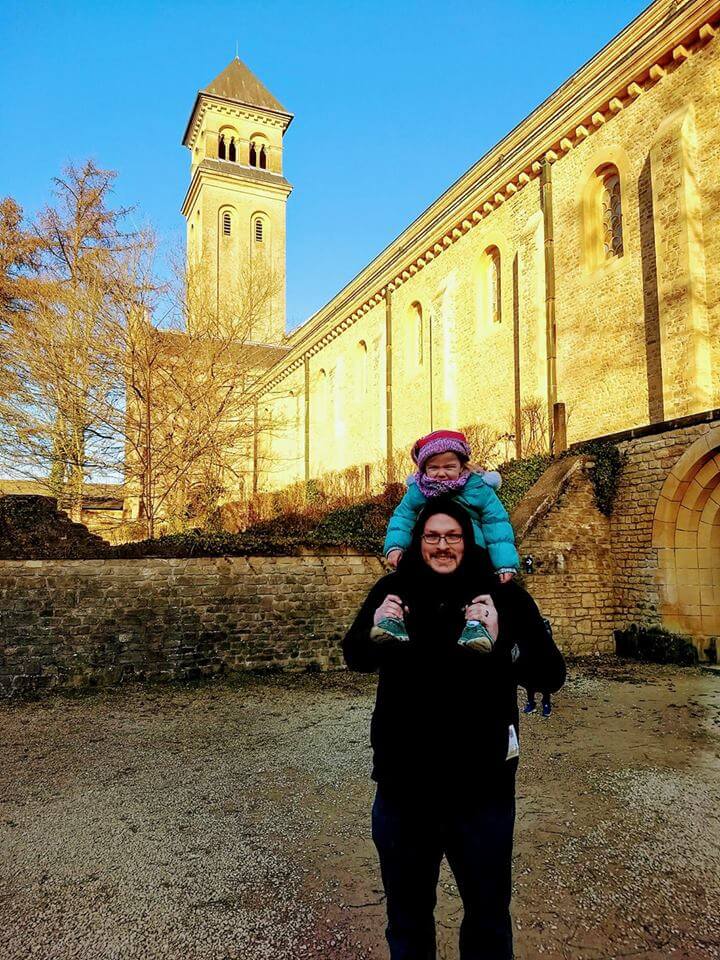
You can tour the ruins of the old abbey, but not the new one.
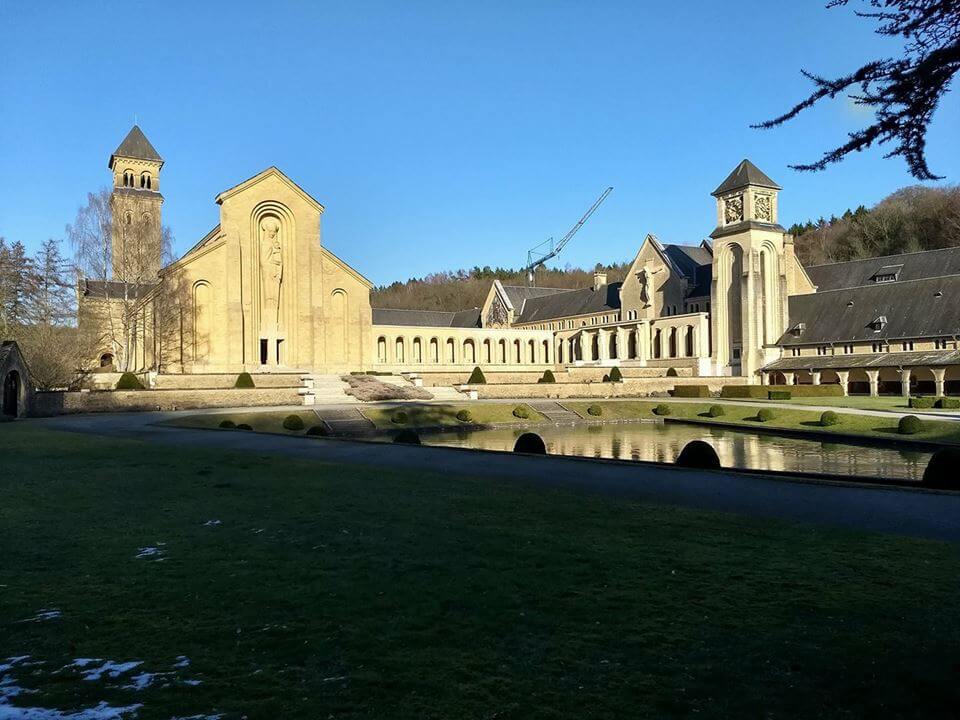
The new abbey, which you can’t tour.
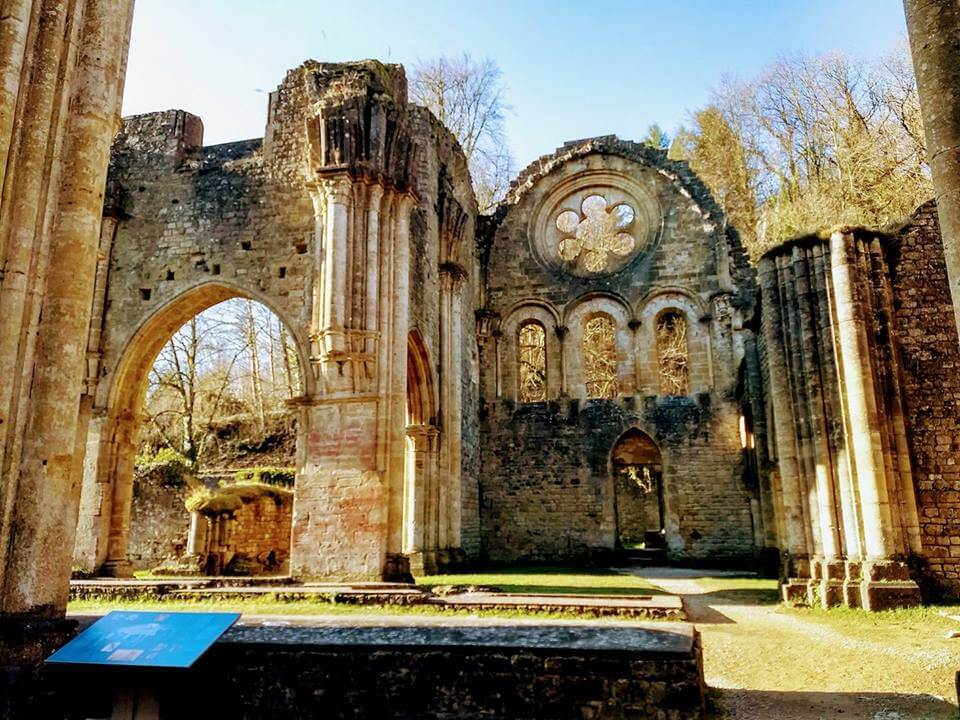
The ruins. But I think maybe you could have figured that out. Still gorgeous, no?
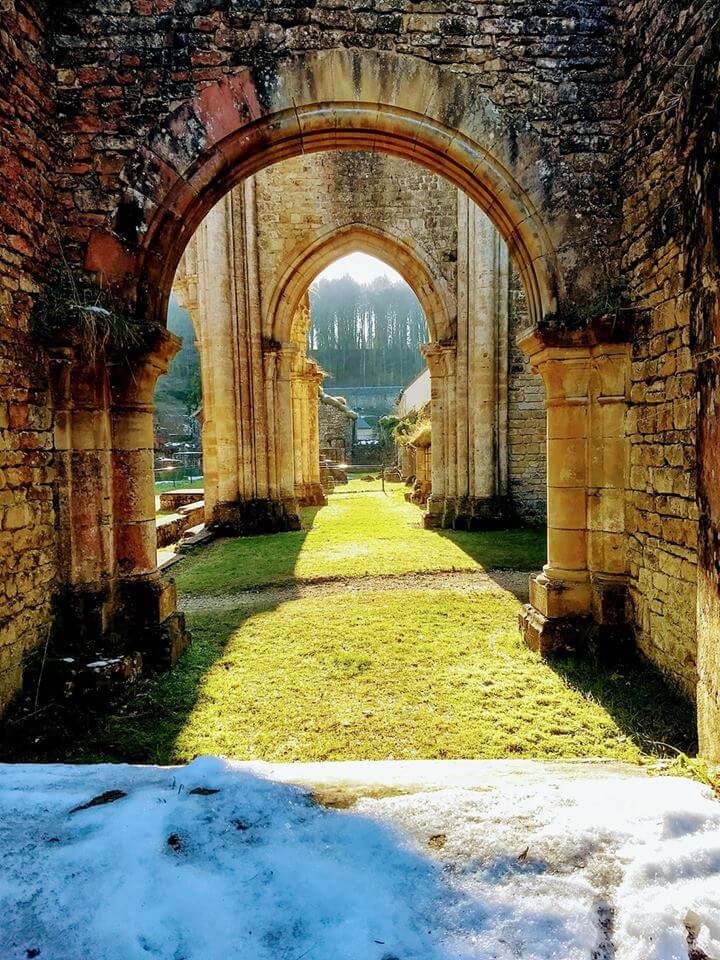
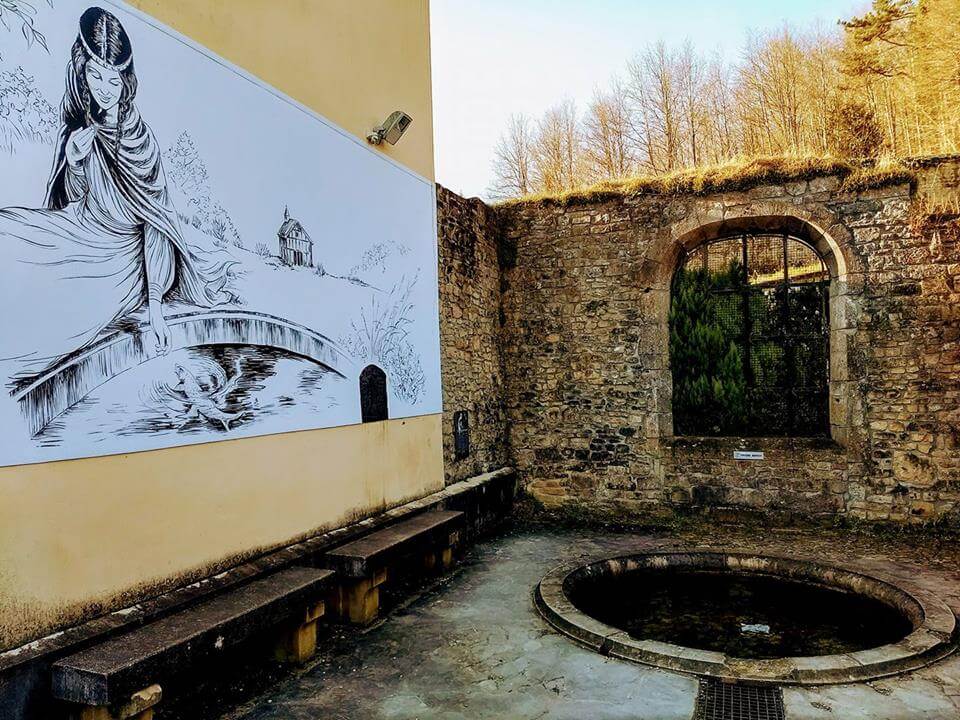
The spring for water for the beer.
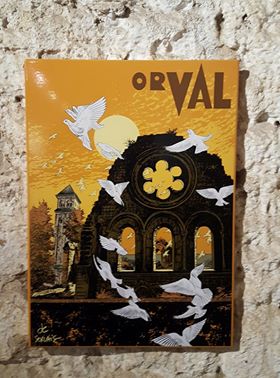
Afterward, we went to Orval Abbey’s on-site restaurant for a couple of beers and a cheese platter. 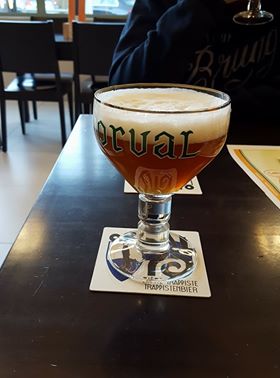
We actually found this beer at our local grocery after returning home from Belgium. Go figure.
Brussels was about a two-hour drive home from Orval, which put it at about the maximum distance that we like to drive, one way, for a day trip. Still, despite it being a long day I absolutely can’t recommend it highly enough as a day trip from Brussels. (Though I should note that despite the extremely long day with lots of walking, naturally Fiona was still hyper-wound up when we returned to our apartment. Because you know what she says to the suggestion she is sleepy, ever? ‘NUTS.’)
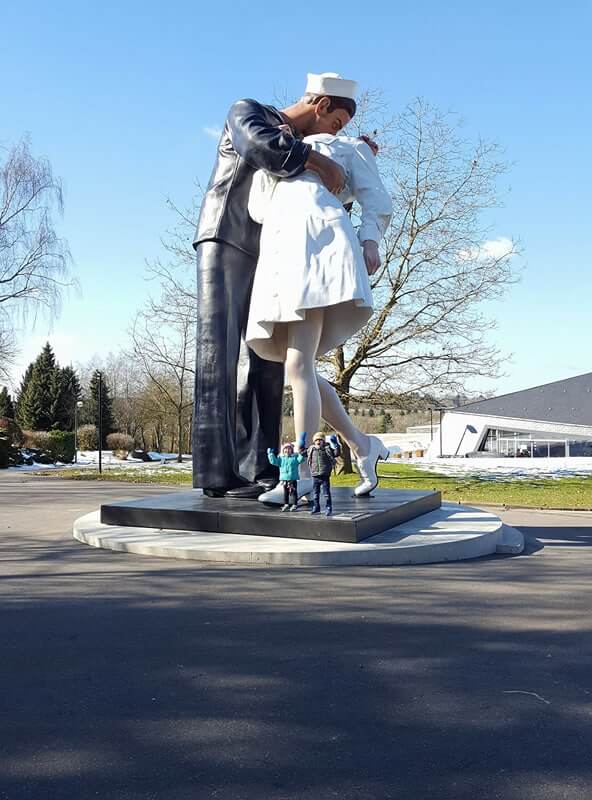
Enjoy this post? Sharing is caring! Keep up with us at Babies With Backpacks on Facebook.
Pin it!
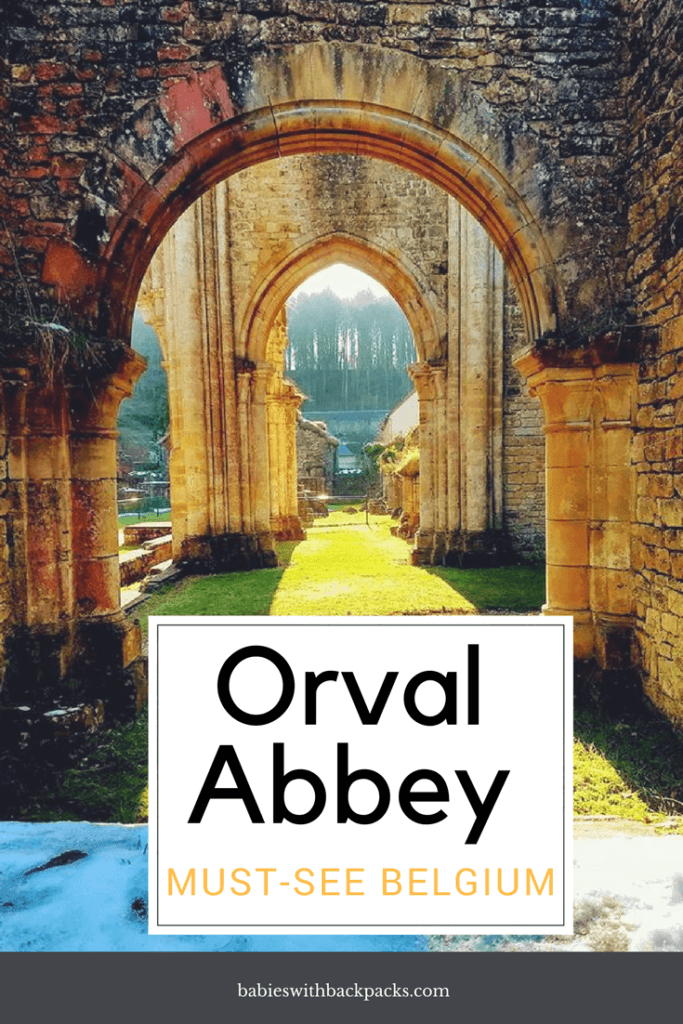
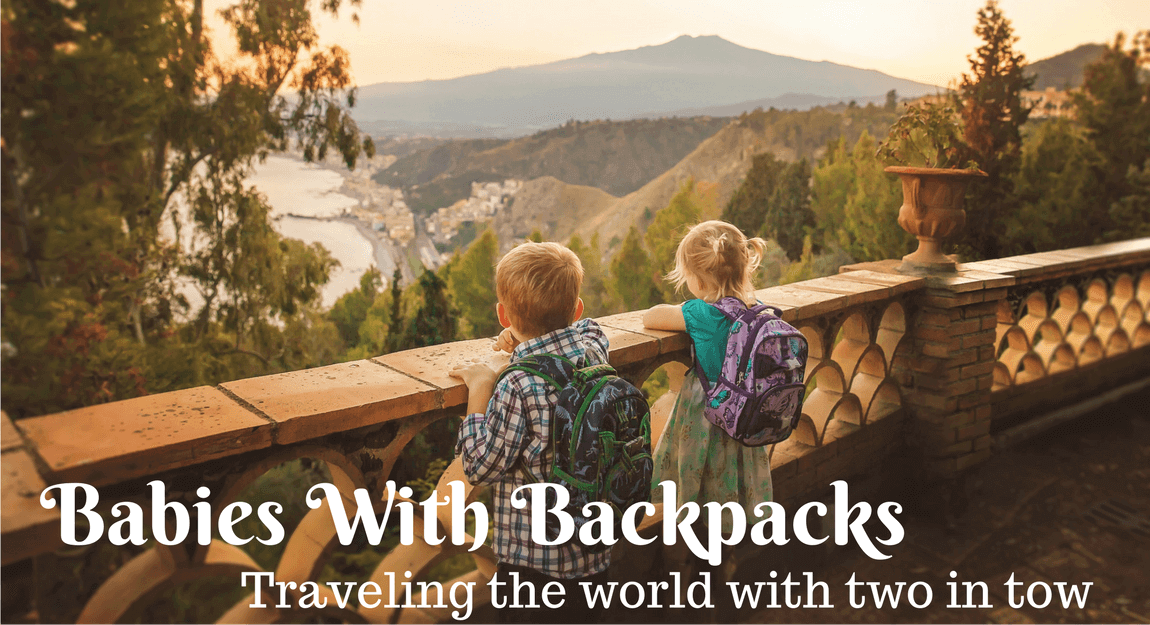
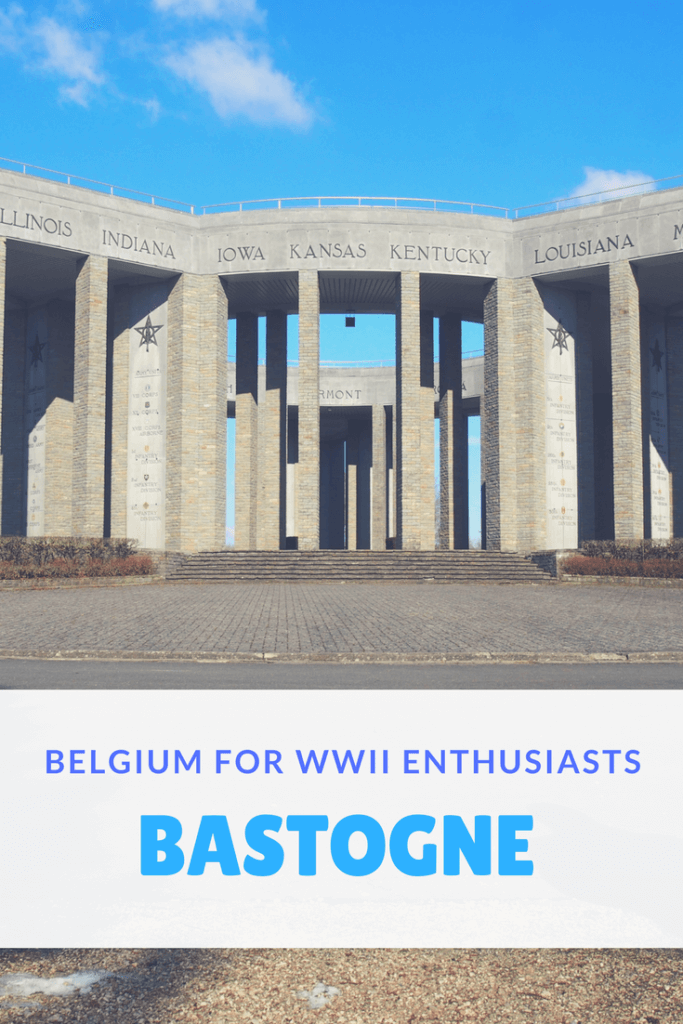

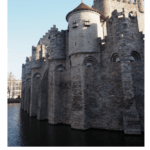
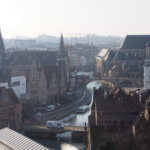
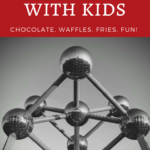

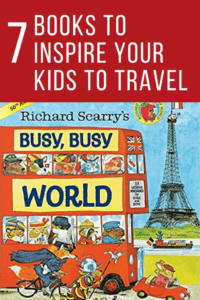
5 thoughts on “Day trips from Brussels: Bastogne and Orval Abbey”
I’ve never heard of this place but it looks really interesting. Great and really comprehensive post!
Thanks, Liz!
[…] as a whim that turned out to the be the best. For the Belgium trip, it was the day we spent in Bastogne and Orval Abbey that blew us away, especially the amazing WWII museum in Bastogne. For Florence/Tuscany, it was a […]
Hi. Thanks for this comprehensive and beautiful read. Would you recommend driving across Belgium. I am afraid of those speed traps besides safety. My friend warned me if I do beer tasting in Orval I cannot drive. Thanks again for more information.
I absolutely recommend driving in Belgium! While there was a fair bit of traffic in Brussels (but annoying, not scary), driving outside the capital was extremely easy. Very similar to driving in the United States, to be honest — certainly easier than Sicily! As for beer tasting, you of course want to be careful about not driving while intoxicated. I’d suggest you arrive early enough to do tastings first, then look around the abbey itself while you sober up. Definitely be cautious, as you are allowed a BAC of only .05 in Belgium. Have fun!